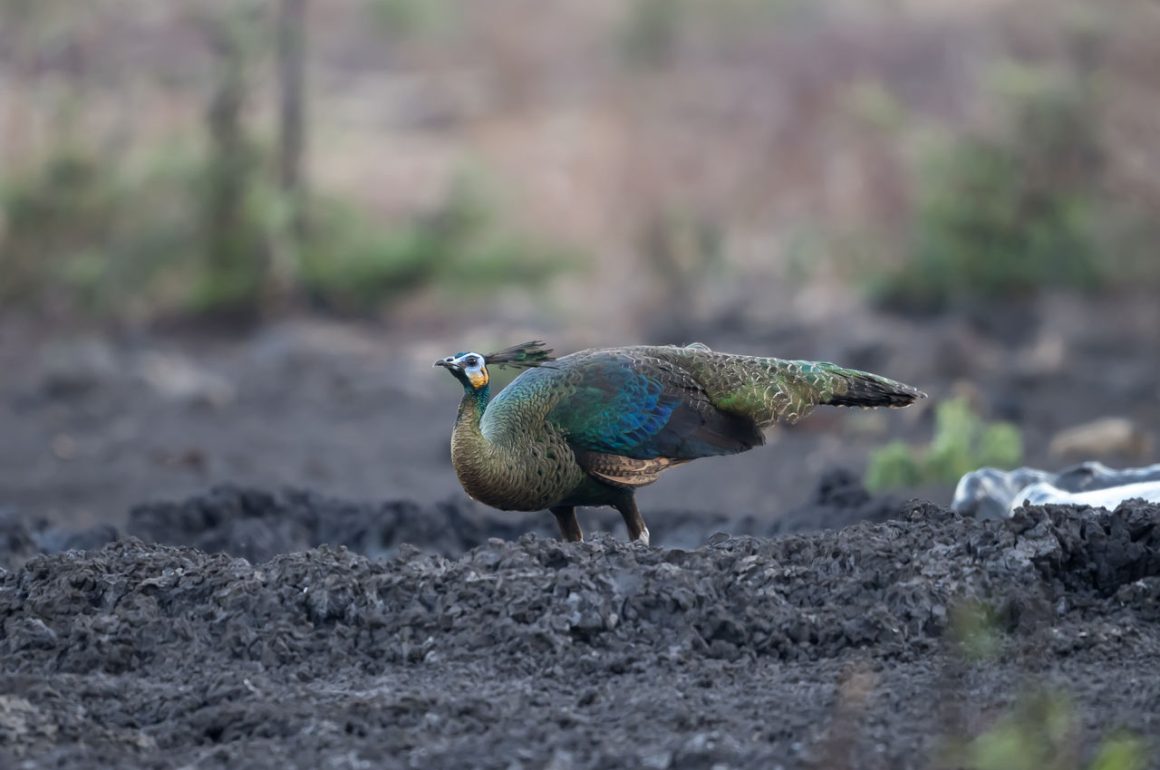
It sometimes seems as if every bird species in the world has at least one location where it is easy to see, however difficult it might be elsewhere. For the Green Peafowl, one such location is Alas Purwo National Park in Java.
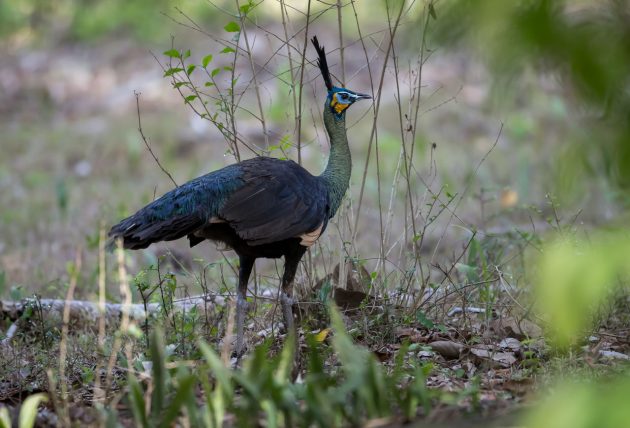
According to Cornell, there are about 1000 of these birds in Java. While they are protected by Indonesian law, some illegal trapping probably continues, so they are only secure in some protected areas such as Alas Purwo.
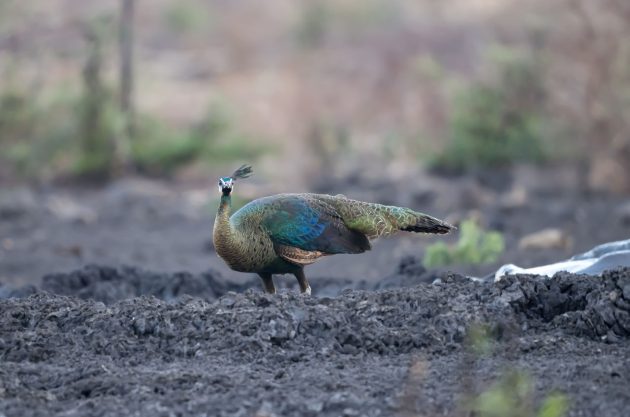
Their train feathers are used in traditional Javanese dances, though most people would hopefully agree that they look better on live birds.
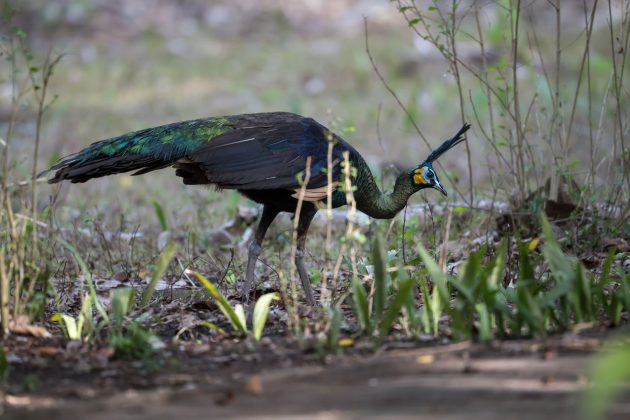
Green Peafowls are not doing any better on the mainland of Southeast Asia. It now occurs in only about 16% of its historical range, with hunting and habitat loss as the main dangers (source).
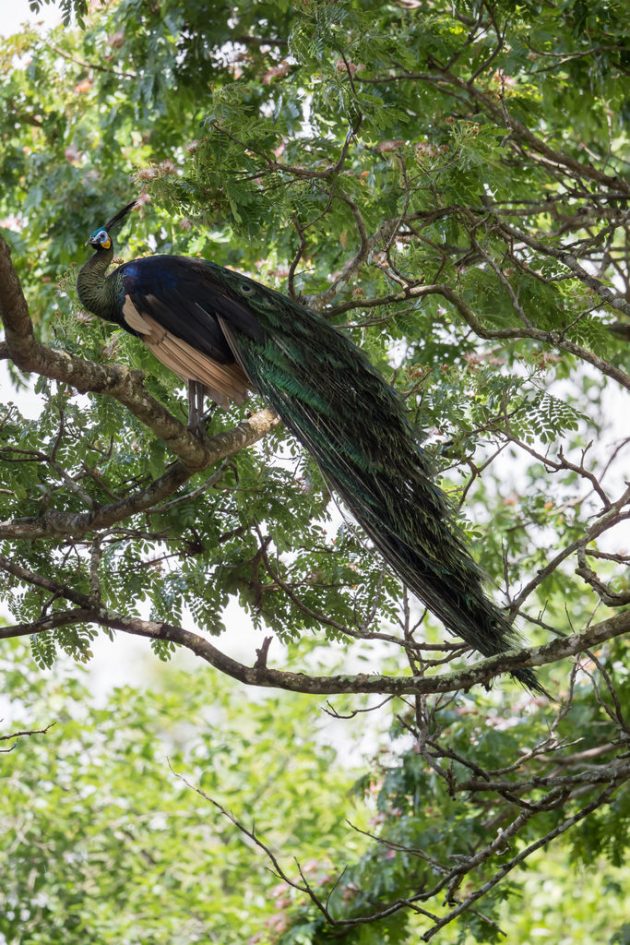
Green Peafowls are listed as Endangered, with an estimated global population of 10-20,000 mature individuals (source: Cornell).
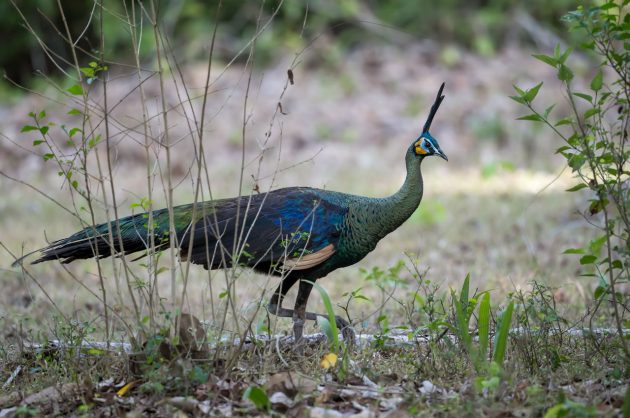
In China, there are less than 500 Green Peafowl, all in Yunnan (source), and subject to conservation efforts (source). There even was a rare lawsuit by a Chinese NGO challenging the building of a dam in peafowl habitat (source). So far, a court in southwestern China has upheld a landmark lower-court ruling to suspend work on the dam, though the same court refused to formally end the project altogether (source).
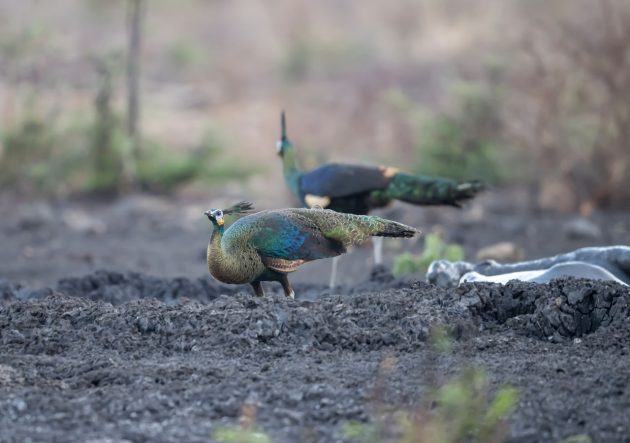
In contrast, in a region in Western Thailand, Green Peafowls are doing well as a result of anti-poaching patrols to preserve tigers and their prey. This has led to problems with farmers, as the birds raid the crops of fields close to their forest habitat (source).
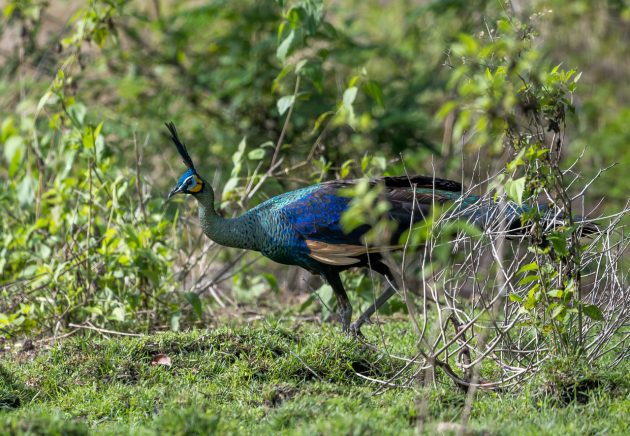
In turn, farmers have taken to using guard dogs to protect their fields, adding to the danger to the peafowls from feral dogs.
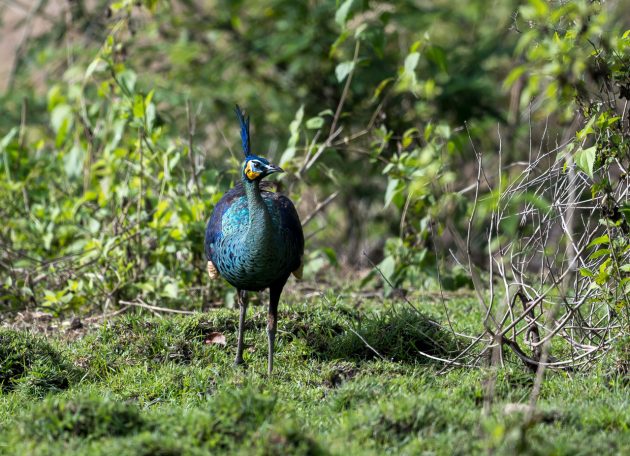
In order to solve the human-wildlife conflict in this area, a project has been started using the Green Peafowl as an iconic animal for the area and developing ecotourism around it. While this has improved the reputation of the species among local communities, the cost linked to human-wildlife conflict still outweighs the local ecotourism benefit (source).
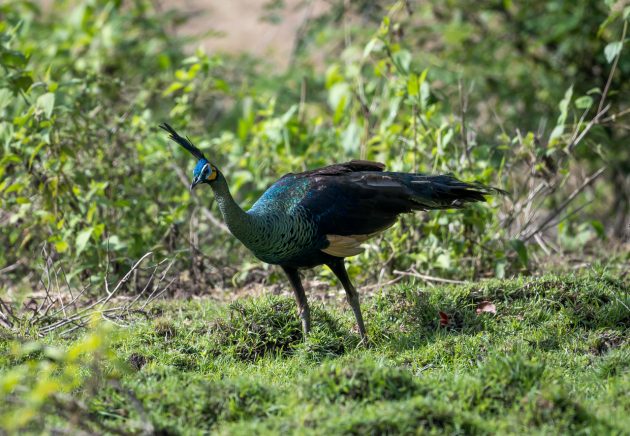
The proximity of rich open farmland has also led to another, slightly comical problem affecting mainly the male peafowls and their displays to females: “The males need open ground to display to the females, but when the female sees the agriculture, they see it is an easy meal and they will both go into the field to eat” (source).
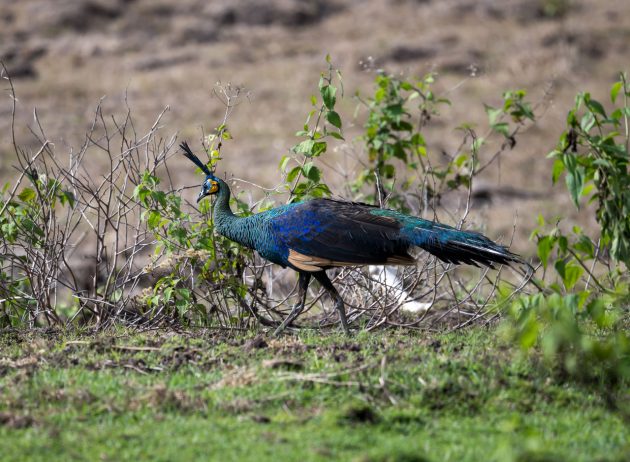
If such easy meals are not available, you may – like me – end up seeing a peafowl looking for food among the trash in the car park.
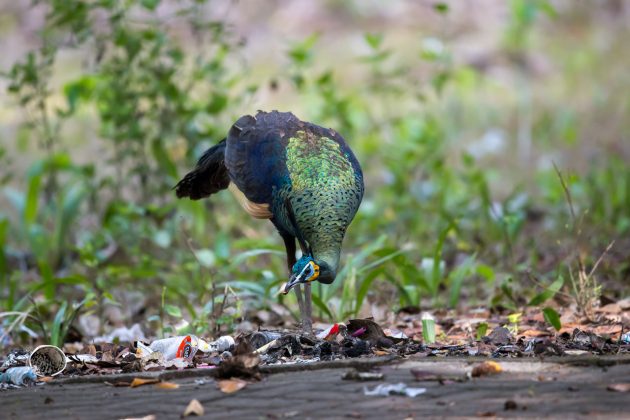
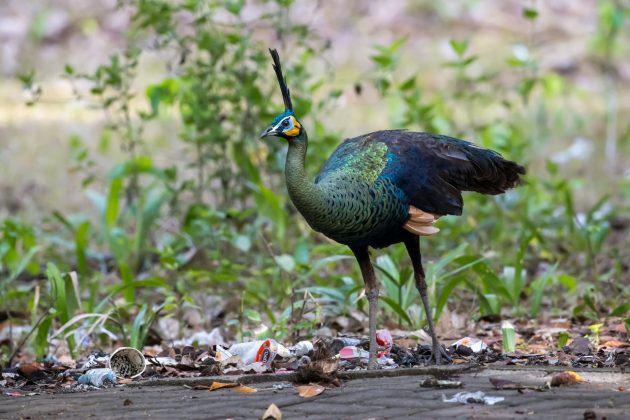
Photos taken at Ala Purwo NP and Baluran NP, Java, Indonesia, November 2024







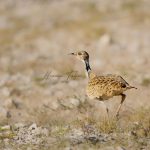
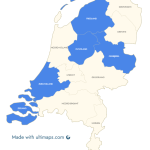

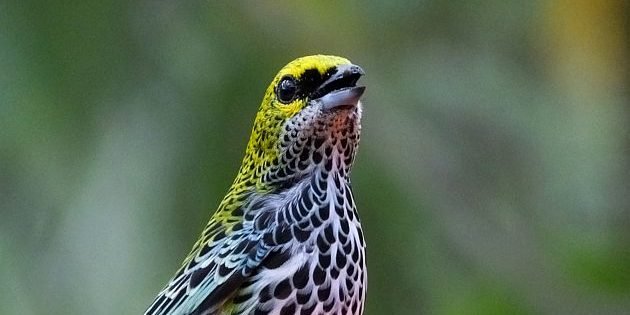
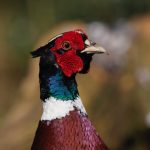
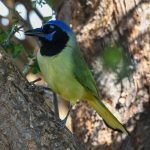
In 1982 I trekked through the rainforest in Western Thailand to a location close to the Burmese border where it was possible to find Green Peafowl. It took a day to hike in, and another to hike out, so it was (by my standards) a major expedition. We did see several Green Peafowl, so it was a success, while it was a bird I felt that I had really worked for. I would have been less impressed if I had seen the birds looking for food among the litter in a car park.
My diary notes that on the trek we were accompanied by four forest guards, carrying between them three Remington pump-action shotguns, plus a .30 calibre automatic rifle. I wrote “I am sure we were in more danger from our guards, who carried their weapons very casually, than we were from poachers or tigers.” The trek was memorable for other birds than the peafowl, with Sultan Tit gaining my five-star rating. We also saw Great and Indian Pied Hornbills and Ruby-cheeked Sunbirds.